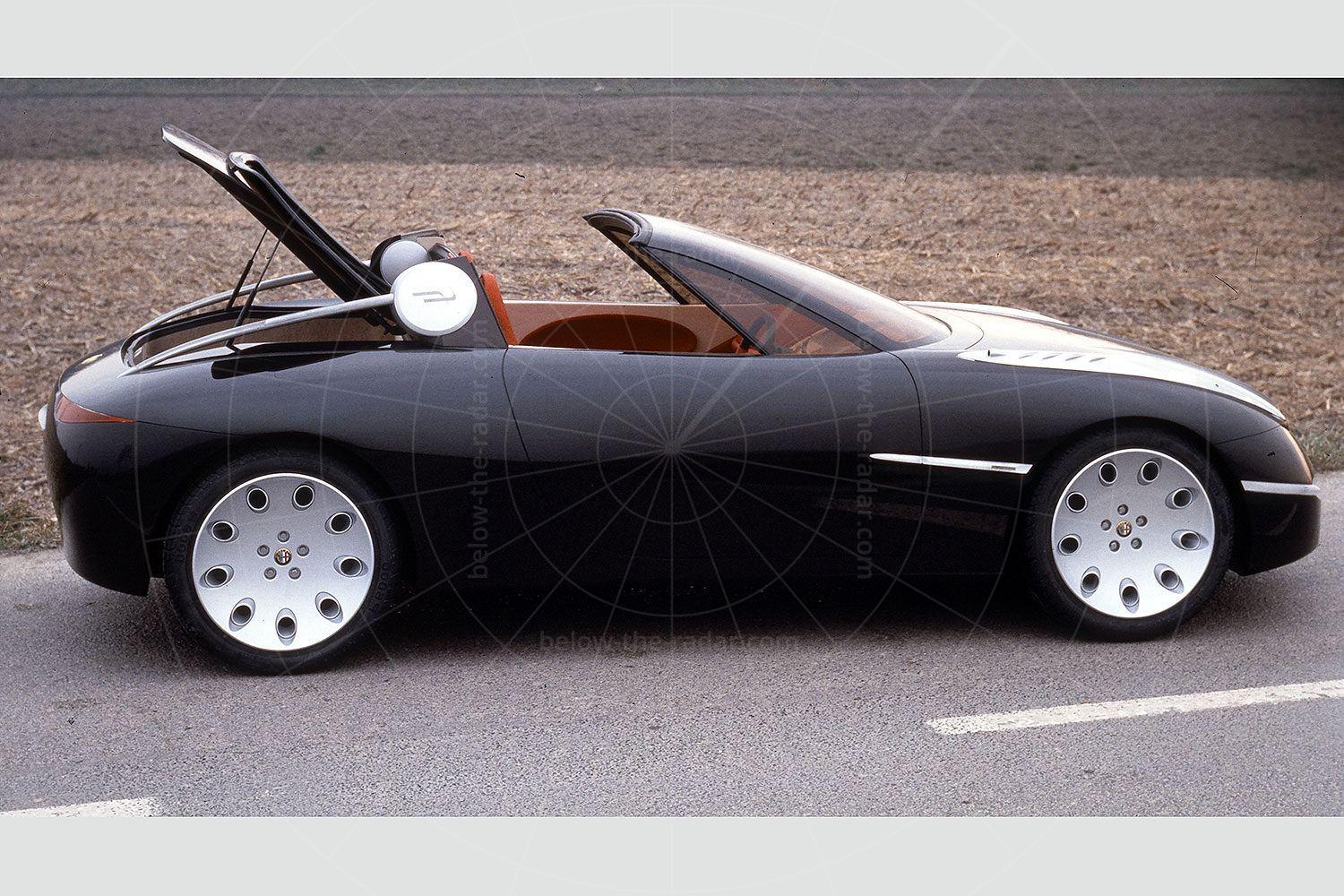Although you could hardly accuse Alfa Romeo of producing a derivative design for its GTV and Spider, when you sat those cars alongside the Fioravanti Vola they suddenly seemed anything but adventurous. And while the Vola wasn’t actually an Alfa Romeo as such, it was the Fioravanti design house’s vision of what a sporting Alfa Romeo of the future could look like. That’s why the traditional Alfa Romeo grille was incorporated into the Vola’s nose, and why the overall lines were reminiscent of the GTV.
But it wasn’t the basic silhouette that was important as far as the Vola was concerned, it was the rather neat roof design with which designer Leonardo Fioravanti broke new ground. The problem that Fioravanti was trying to overcome was how to build an open-topped sports car without the inherent shortcomings so typical of the genre. By using a fabric roof the packaging would be neat and tidy whether the roof was up or down, but it offered little security along with too much wind noise at speed when the roof was raised.
The arrival of the Mercedes SLK in 1993 had started a new way of thinking (even if it had been beaten to the folding hard top concept by several decades), but there were serious shortcomings with the packaging of a folding metal roof. While it may have offered security and refinement when raised, the stowage of such a roof caused major problems when it came to the provision of luggage space. To overcome all these issues Fioravanti decided to come up with something completely different.
Bearing in mind that the brief was to come up with a roof that offered security and low noise levels when in place, but which couldn’t affect boot space particularly when it was stowed, something pretty radical was called for – or perhaps something very simple. After all, it’s often the simple solutions which are the neatest, and the Vola’s solution was certainly simple, because it was nothing more than a revolving roof panel which pivoted around the top of the rear window.
When closed, the roof was secured along the top of the windscreen header rail. Because it wasn’t actually removable there was no need to engineer any catches along the back of the panel. And because it wasn’t removable there also wasn’t any need to find anywhere to stow the roof when open-topped driving was required. Opening up the Vola’s interior meant simply releasing the roof panel at the front, turning it through 180 degrees and clipping it into place along the top of the luggage bay.
The roof itself was supported by a carbonfibre frame, so it didn’t require more than one person to transform the Vola from closed coupé into open-topped sportster. Even when the roof was closed the cabin remained light and airy thanks to the panel being made of transparent plastic, although the material did protect against ultra-violet rays. But perhaps the most ingenious thing about the Vola’s roof arrangement was that because it was so simple, automating it required none of the hydraulics that are so common in – and which weigh down – most production cars featuring powered folding roofs.
Inside the Vola things were equally simple, despite the fact that all the gadgets that were expected in a modern sports car were fitted. Satellite navigation was joined by climate control, a telephone and a powerful stereo, with everything nicely integrated into the centre console so that it looked particularly uncluttered. It was much the same on the outside, with long, slender headlights, behind which were the louvres to let hot air out of the engine bay.
Although the Vola was a non-runner, the assumption was that it would be fitted with a 3.0-litre Alfa Romeo V6, as fitted to the GTV and Spider. Now that would have been quite a car.
| Vital statistics | |
|---|---|
| Debut | Geneva 2001 |
| Designer | Leonardo Fioravanti |
| Engine | Front-mounted, 2959cc, V6 |
| Power | 218bhp |















